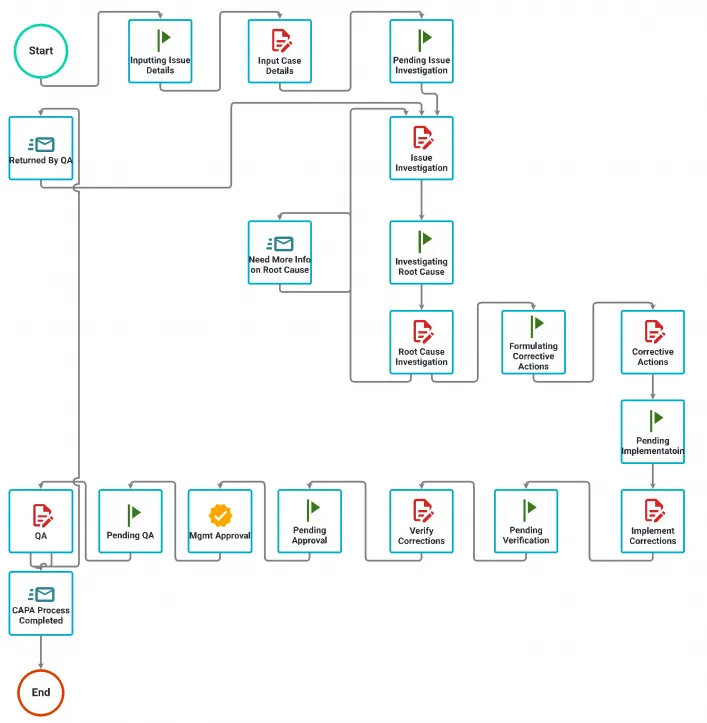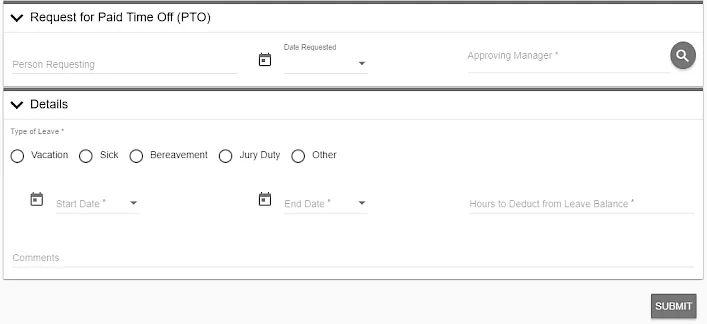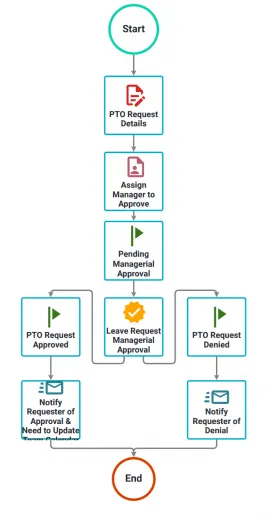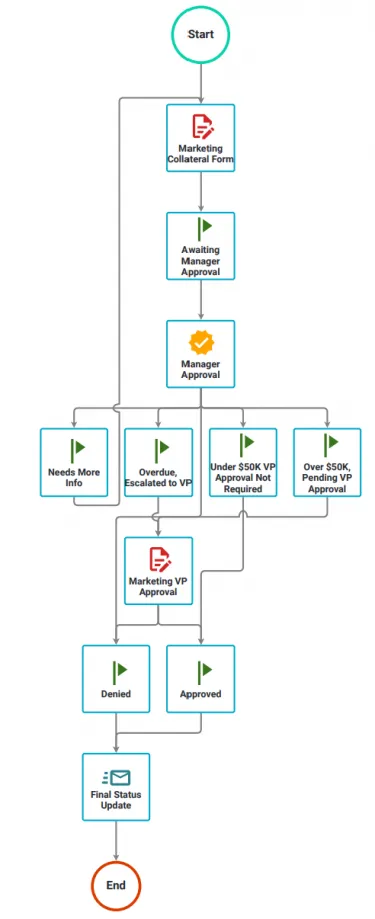Optimizing Departmental Operations Guide
Table of contents

In today's fast-paced and competitive business landscape, organizations constantly seek ways to enhance efficiency, reduce costs, and improve overall performance. One crucial aspect of achieving these objectives lies in optimizing departmental operations. From IT to Finance, Human Resources to Sales, and Marketing to Compliance, every department plays a vital role in an organization's smooth functioning and success.

The accessibility of automation and digital tools has revolutionized how businesses operate, offering opportunities for streamlining processes, increasing productivity, and driving innovation. This article will explore how organizations can harness the power of automation and digital technologies to optimize their departmental operations.
Throughout the following sections, we will dive into real-world case studies, insightful analyses, and practical strategies to maximize the efficiency and effectiveness of various organizational departments. Whether you're a business leader looking to drive organizational change or an operations manager seeking to streamline workflows, this article will provide the knowledge and tools needed to optimize departmental operations and propel your organization toward tremendous success in the digital age.
Skip to Section:
- IT
- Finance
- Compliance
- HR
- Sales/Marketing
IT Service departments are the nervous system of an organization's operations. These days, IT touches nearly every aspect of business operations, from sales to marketing to finance and HR. That means IT teams are stretched more than ever with higher and higher expectations. One way to combat the onslaught is by becoming more efficient at managing the incoming work and requests with Workflow for IT Services.
To optimize your department's efficiency and productivity, we must discuss technical and non-technical ways to improve overall organizational performance.
Digital Tools
Nutrient Workflow
Let's begin with workflow automation. A workflow management and automation platform that allows IT departments to build simple or sophisticated automated workflow systems that can handle almost any IT business process.
Nutrient Workflow is a workflow management and automation platform that allows IT departments to build simple or sophisticated automated workflow systems that can handle almost any IT business process. Nutrient Workflow enables IT administrators to create solutions for submitting requests, gathering approvals, routing information, triggering alerts, and more.
On the front end, employees have access to a streamlined portal for submitting forms, tracking progress, and communicating with each other. On the backend, IT administrators can add new workflows easily and integrate with existing systems to push and pull information as needed. Sync Nutrient Workflow with Active Directory to make user management easier (available only with self-managed solutions on-premise or private cloud instances).
Workflow for IT Services Examples:
- IT Support Requests(opens in a new tab)
- Requests for software changes
- New technology projects
- System Access
- On-boarding setup
- Hardware and software requests
- Incident reporting
- Technical service/support requests
- Service Desks
- Ad hoc task management
- IT issues report
- IT service request
- New distribution list request
- Employee offboarding
Jira(opens in a new tab)
Project management and issue tracking tool for software development teams.
SolarWinds(opens in a new tab)
Network management and monitoring software for optimizing network performance.
Microsoft Azure(opens in a new tab)
The cloud computing platform offers various building services and deploys and manages applications.
VMware(opens in a new tab)
Virtualization and cloud infrastructure solutions for optimizing IT resources and reducing costs.
Case Study: GlaxoSmithKline – Streamlining IT processes and enhancing productivity.
GlaxoSmithKline (GSK), headquartered in the U.K. with operations based in the United States, is one of the leading research-based pharmaceutical companies with an estimated seven percent of the world's pharmaceutical market.
GSK needed a request management system that could work for all its IT departments worldwide. The goal was to give users an easy-to-use interface that they could use to make requests. GSK was already using Nutrient Workflow, so the company expanded its use rather than starting over. Nutrient Workflow connected with the GSK directory, so many fields in the online request forms could be pre-filled, saving users time.
GSK now uses Nutrient Workflow for over 600 different types of requests, with more being added every day. The system processes almost 16,000 requests per month. Before Nutrient Workflow, requests had to be sent to dispatchers who would decide which team or approver should be notified. Nutrient Workflow removed these intermediate steps and allowed requests to be sent directly to the appropriate team or approver based on the client's location or business unit.
Before using Nutrient Workflow, GSK had different processes for handling user requests, some using paper forms, others using web forms. Adding a new request type used to require hiring outside web designers, computer technicians, and business consultants, and could take anywhere from a few hours to six weeks. After Nutrient Workflow was implemented, the development time for this service dropped by 77%, and costs were cut by 96%. The average interface development time went from three weeks to four days.
"The widespread adoption of this system went much faster than we expected. What we did was give employees an automated approval and notification process, replacing the manual gathering of approvals for IT services, saving the business units time and money. We've been able to make that available to many more employees in a very short amount of time." – Neil Weitz, Director of IT Help at GlaxoSmithKline.
The efficiency of GSK's IT service groups has improved significantly since implementing Nutrient Workflow. Employees using the system regularly are more satisfied with its ease of use. According to Weitz, GSK has only scratched the surface of what the system can do.
Improving IT Department Efficiency Beyond Technology
Perhaps your organization isn't ready to undergo a full-blown transformation. There is also non-technical advice for optimizing an IT department's operations. This begins by prioritizing communication throughout the organization, not just the IT department. When communication and collaboration between teams and departments are held to a high standard, it'll ensure alignment with organization goals and will optimize operations.
Next, foster a culture of continuous learning and skill development among IT staff to stay updated with the latest technologies and trends. This can be done by investing in your team's personal and professional growth. Various training programs can be offered to enhance the team's knowledge and improve overall performance.
Lastly, commit to at least one annual review with your team at individual and department levels. Check to see what is working and what might not be working. Identifying inefficiencies will give a jumping-off point to skyrocketing operational efficiencies.
IT Resources
- Workflow Management Guide for IT(opens in a new tab)
- Developer Resources(opens in a new tab)
- White Paper: How IT Controls Change with Workflow(opens in a new tab)
Fiscal responsibility is more central to businesses today than ever before. Top executives are shifting focus to identifying new tools like workflow for finance operations to ensure compliance and consistent ROI across an organization's many divisions.
For instance, if you're still using paper, telephone, and fax for requests and approvals of capital expenditures, you're already long out of date. These and other business-critical processes demand timely attention because they drive core functions in your organization.
Digital Tools
Nutrient Workflow
Nutrient Workflow streamlines critical processes and removes the barriers to running a high-performance financial organization.
Budget approvals, accounts payable, purchase requests, expense requests, invoice reconciliation, and other financial processes can be upgraded to automated workflows that ensure consistency and compliance.
Some of the many Finance processes that can be automated with Nutrient Workflow:
- Capital Expenditure Requests
- AP Automation
- Purchase Requests
- Travel Expense Requests
- Vendor and Contract Approvals
- Journal Entries
- Treasury Requests
- ACH Requests
- Wire Requests
- Investment Authorizations
- Payables/Receivables
QuickBooks(opens in a new tab)
Accounting software for small and medium-sized businesses, offering features for managing invoices, expenses, and payroll.
SAP ERP(opens in a new tab)
Enterprise resource planning software for financial management, procurement, and supply chain operations.
Xero(opens in a new tab)
Cloud-based accounting software with tools for invoicing, bank reconciliation, and financial reporting.
Expensify(opens in a new tab)
Expense management software for tracking and automating expense reporting processes.
Adaptive Insights(opens in a new tab)
Cloud-based financial planning and analysis platform for budgeting, forecasting, and reporting.
Case Study: Nutrient Workflow Gives Red Bull Asset Acquisition Wings: Centralizing Country-Specific Processes Across a Region.
Red Bull was searching for a workflow management system that would automate a paper- and email-based request system in a way that saved time and was error-proof. This system also needed to put everything in one place to make it easier for managers, as well as the employees making the requests, to complete the asset acquisition process more efficiently.
This is exactly what Nutrient Workflow was able to do for the organization. "Thanks to the Nutrient Workflow platform, we were able to eliminate our old paper-based sign-off system for CAPEX. Our review and approval process has been greatly improved, plus, it keeps a record of the activity so we can reduce room for mistakes.” – Paul Proano, CFO Latin America, Red Bull.
Improving Finance Department Efficiency Beyond Technology
Besides technology methods to improve efficiency, there are other routes to take advantage of to improve department operations. First, foster a culture of resource optimization across all levels of the organization. This will lead to a cost-conscious decision and better budget management.
It is essential to regularly review and update financial policies and procedures to keep up with changing business conditions and regulations. This ensures everyone in your finance department is on the same page and operations run smoothly with up-to-date information. We will also discuss this further in the next section of this eBook, Streamlining Compliance Procedures.
Finance Resources
- Workflow Guide for Finance(opens in a new tab)
- Video Demo: Nutrient Workflow for CapEx Workflow
- Automate Request and Approval Workflow(opens in a new tab)
- Finance Teams Spending Too Much Time Processing Transactions
Regardless of industry, the compliance function is responsible for ensuring that the company is designed to comply with internal policies, applicable laws, and regulations and ensuring that those policies and procedures are followed. A lot more goes into compliance management, but that's the essence. Here are some of the top ways to optimize operations in compliance departments.
Digital Tools
Nutrient Workflow:
Nutrient Workflow provides a consistent, secure, auditable workflow for any compliance system. Enforce consistent processes to match the policies and procedures within your organization or department. As compliance regulations continue to increase in both number and scope, the automation of compliance workflows has become critical. Whether you need to comply with Annex 11, ERES, 21CFR Part 11, Sarbanes-Oxley, ISO Standards, the Gramm-Leach-Bliley Act, HIPAA, SEC, FINRA, OCC, internal security protocols, or any other compliance requirements, workflow automation allows you to build compliance workflows that provide a safety net for your organization.
Whether it is necessary to prove proper due diligence was followed to assist with an investigation or to determine if an inquiry was handled appropriately for internal quality review, the need to maintain complete audit trails of events and activities has become an essential part of day-to-day business.
When a workflow application automatically self-documents the process steps an event follows, it eliminates the need for:
- Is there someone to manually maintain a spreadsheet of events and activities?
- The retrieval and organization of old documents from disparate applications?
- Post-mortem interviews to obtain specific times and dates. (Note: Post-mortem interviews are still valuable for more subjective information)
- Digging through old emails from multiple inboxes and individuals.
- Sorting out conflicting accounts of events from stakeholders
Being able to turn over an automatically generated process audit trail has saved organizations a great deal of time and money, fostering goodwill among auditing agencies.
Compliance Example: CAPA Process
This is a CAPA process built with Nutrient Workflow's workflow automation platform; the process begins with reporting an issue with details and documentation and continues through the investigation and corrections, including review and approval. Read More Here

DocuSign(opens in a new tab)
Electronic signature platform for securely signing and managing documents, ensuring compliance with legal and regulatory requirements.
Compliance360(opens in a new tab)
Compliance management software for centralizing compliance activities, tracking regulatory changes, and managing risk.
AuditBoard(opens in a new tab)
Integrated GRC (governance, risk, and compliance) platform for managing internal audit processes, compliance assessments, and regulatory reporting.
Case Study: BP – Tracking and archiving data for compliance.
BP is one of the world's largest energy companies, interested in more than 100 countries, and has over 96,000 employees. BP was in a tight squeeze to find one solution to digitize their finance department requests, integrate with SAP for all requests, and comply with the Sarbanes-Oxley regulations. With Nutrient Workflow, all of this could be accomplished—no problem.
Read the full case study here.
Improving Compliance Beyond Technology
Other than workflow automation or any of the technologies mentioned above, there are different ways to improve compliance operations for your organization. One of the most notable is creating Standard Operating Procedures (SOPs) in your organization.
Standard operating procedures seek to improve operational efficiency and ensure consistent processes are followed. This is done by documenting and communicating the organization's accepted practices, policies, and processes to get work done efficiently and consistently. You can practice process documentation with SOPs and learn how in our popular video(opens in a new tab), How to Write Process Documentation.
Compliance Resources
- Four Requirements of Internal Process Compliance
- Every Compliance Officer’s Best Friend: Automated Compliance Workflow
- How to Take Control Over Regulatory Compliance with Automation
- Ensuring Compliance by Improving User Experience
- Reduce “Failure to Supervise” Risk with Workflow Automation
Dealing with human resources tasks can be a challenge due to time-consuming manual processes, the potential for errors, and a lack of standardization. These manual tasks consume valuable time and open the door to human errors that introduce risk. Additionally, it's challenging to maintain a uniform approach across HR functions without standardized processes. Addressing these challenges is crucial for enhancing efficiency and accuracy within HR departments.
Digital Tools
Nutrient Workflow:
One key strategy transforming HR departments across industries is the ability to automate workflows and forms used within the organization. While there are still human elements to any process, any workflow can be automated. For HR departments, processes like onboarding, offboarding, new hire management, and more will all benefit from optimizing automation.
Making HR forms and procedures more accessible to distribute, process, and review with workflow for human resources can make a world of difference in your costs when onboarding and training new employees. Nutrient Workflow helps you deliver superior employee support by providing a centralized portal for submitting, approving, and tracking HR requests. From cost savings to improved employee experience, your organization will thrive with the help of Nutrient Workflow. This article dives into more benefits of automating HR department workflows.
HR Workflow Examples:
- New Hire Management
- Time Sheets
- Employee Change of Status
- Employee onboarding/offboarding
- Employee self-service
- New Hire Approvals
- Job postings
- Leave management(opens in a new tab)
- Payroll change approvals
- Performance management
- Time off requests(opens in a new tab)
- Training requests
Illustrated Example: Employee Leave Request Workflow
Many customers use Nutrient Workflow to support employee requests for paid time off (PTO), leading to better leave management. This is a typical example of how an automated PTO process can work.
Digital Form:

Automated process:

Workday(opens in a new tab)
Cloud-based HR management software for employee data, payroll, benefits, and performance evaluations.
BambooHR(opens in a new tab)
HRIS (Human Resource Information System) platform for automating HR processes, managing employee records, and tracking time off.
Greenhouse(opens in a new tab)
Applicant tracking system (ATS) for managing the recruitment process, from job posting to candidate onboarding.
Case Study: A Medical Provider Automates HQ and Remote Sites for Healthy Organizational Growth
Medcor was looking for a solution that would automate tasks in its IT and HR departments to help centralize and manage all requests and increase consistency and compliance within its organization. Before Nutrient Workflow, they had to route hiring paperwork back and forth via overnight mail.
“When new employees need to be set up in the system, HR receives requests to set them up on payroll as well as complete other new employee paperwork. There is also a process through HR that allows managers to maintain performance notes and yearly review information. Getting new employees on board faster means our clients will get medical professionals ready to deliver care more quickly.” – Tim Sahouri, CIO, Medcor.
Read the full case study here.
Improving HR Operations Beyond Technology
Some other options to boost HR department operation efficiency is to focus on employee development and engagement to attract and retain top talent within the organization. A way to do this is by implementing flexible work arrangements and wellness programs to support employee well-being and work-life balance.
Another example would be to provide ongoing training and development opportunities to empower employees and enhance their skills and capabilities. If employees are confident and capable in their individual roles, productivity and output will increase.
HR Workflow Resources
- eBook: Effective Employee Offboarding
- eBook: Automating Employee Onboarding
- Workflow Management Guide for HR(opens in a new tab)
- Why You Should Automate Your Offboarding Process
- Automate Request and Approval Workflow(opens in a new tab)
Workflows can be critical for nearly every department and team in a business, but perhaps few are so critical as workflows for marketing and sales. After all, sales revenue is the lifeline of any business – without sales, funds stop coming in and the business is in jeopardy. Beyond the general importance of sales, sales and marketing teams often have to juggle tons of data related to acquiring new leads, nurturing old ones, and supporting efforts to grow the business
For this reason, having proper marketing workflow tools in order to support workflows for marketing and sales is critical.
When there’s revenue on the line, an outmoded workflow for marketing and sales means poorly processing requests can jeopardize the level of service provided to the customer. These time pressures from deadlines and bottom lines can be alleviated when Nutrient Workflow accounts for every process and customer need.
Digital Tools
Nutrient Workflow
With Nutrient Workflow’s marketing workflow management software, you can automate customized product requests, discount authorization, PR approvals, customer status changes, contract reviews, and marketing collateral changes/approvals. Use our marketing workflow tools to ensure that marketing and sales procedures are strictly followed and protect the organization's brand.
Sales Workflow Example: Sales Opportunity Assignment
Our global security infrastructure client needed to assign a team to respond to sales opportunities automatically. This meant gathering staff from the implicated tech teams, sharing materials related to the opportunity, supporting communications among team members, and then passing information to an approval matrix based on dollar amount, territory, technologies, etc.
Nutrient Workflow worked with the team and an outside consultant to design a solution that leveraged Nutrient Workflow’s API to:
- Automatically launch an Nutrient Workflow workflow action when a new Opportunity is created.
- Send time trigger or action trigger alerts to Salesforce users and non-users as workflow tasks are completed.
- Perform a field update of Salesforce records related to the Opportunity with real-time status data.
- Use evaluation criteria to determine the path of any request.
Marketing Workflow Example: Request for Collateral
Whether you're managing a handful of marketing collateral requests each day or you are running a multi-tiered Marketing Brand Center like some of our clients, this process is extremely helpful. Providing sales or anyone else in the organization with collateral one-stop shopping is great for them while giving marketing a consistent, automated, auditable process.
The form and process are drop-dead simple but can greatly impact marketing productivity.
Form:

Process:

Other Marketing Digital Tools
HubSpot Marketing Hub(opens in a new tab)
All-in-one marketing automation platform for email marketing, lead generation, and inbound marketing.
Google Analytics(opens in a new tab)
Web analytics tool for tracking website traffic, user behavior, and campaign performance.
Hootsuite(opens in a new tab)
Social media management platform for scheduling posts, managing multiple social media accounts, and analyzing social media performance.
Mailchimp(opens in a new tab)
Email marketing platform for designing, sending, and analyzing email campaigns.
Canva(opens in a new tab)
Graphic design platform for creating marketing materials, social media graphics, and visual content.
Other Sales Digital Tools
Salesforce(opens in a new tab)
Customer relationship management (CRM) platform for managing sales pipelines, leads, and customer interactions.
HubSpot Sales Hub(opens in a new tab)
Sales automation software with tools for email tracking, prospecting, and sales analytics.
LinkedIn Sales Navigator(opens in a new tab)
Social selling platform for identifying and connecting with potential leads on LinkedIn.
Outreach(opens in a new tab)
Sales engagement platform for automating outreach, follow-ups, and sales communication.
Marketing Case Study: National 4-H – Implementing digital strategies for marketing success.
4-H needed a solution to improve and automate their national curriculum peer review system for these educational materials. They specifically wanted a system to take this manual process and make it automatic and smooth. Turning a snail mail system of edits and comments into a coherent, purpose-built, automated online workflow for peer reviewers and content submitters have had a transformational effect on 4-H’s curriculum development program. Workflow automation has made it easier to get more youth and professional development materials out to the kids they serve around the country.
Sales Case Study: Case Study: Sony – Utilizing digital tools for sales process improvement.
Background
SONY Network Entertainment (SNE) is the premier source for its users’ digital entertainment needs (and wants) including music, movies, games, and more, on a variety of connected devices, all through one account. Because it promises its millions of customers “quick and convenient” entertainment, the storefront must be kept up-to-date with the latest content offerings, as soon as they are available.
When the service was launched and as it added new features and capabilities, the Content Operations group found itself increasingly in need of better metrics, more detailed reporting, and a more visible throughput of its workflow.
“SNE has streamlined its processes within the Content Operations team as more are handled and available for tracking via Nutrient Workflow. This has been a colossal improvement for our team. We’re a smarter operation – and this is an achievement we’ve been working toward for years.” – Mallory Manke, Process Improvement Analyst for SONY Network Entertainment.
Improving Efficiency Beyond Technology
Besides technology solutions, there are other options to consider to improve your departments operations. With sales, its important to prioritize building long-term relationships with customers. This involves investing in sales training programs to equip teams with the necessary skills and knowledge for success. Embracing a customer-centric mindset across the organization is paramount, emphasizing the importance of understanding and meeting customer needs and expectations.
For marketing, success depends on employees in the department having a deep understanding of target audiences to make strategic decisions. Brands should aim to build authenticity and credibility through transparent and honest communication with customers, focusing on nurturing trust and loyalty. Remaining adaptable in response to evolving market conditions and consumer preferences is crucial for maintaining relevance and achieving long-term success in the competitive landscape.
Marketing and Sales Resources
- Automate Sales and Marketing Processes at your Organization
- SalesForce Workflow Integration
- Price Discount Requests
- Marketing Collateral Approvals
- Contract Management
- Lead Management Process(opens in a new tab)
Optimizing departmental operations is not just about implementing the latest technologies; it's about fostering a culture of continuous improvement, collaboration, and customer-centricity across the organization. By embracing automation, digital tools, and non-tech strategies, organizations can streamline processes, enhance efficiency, and drive innovation to propel themselves towards greater success in the digital age. Whether you're a business leader driving organizational change or an operations manager seeking to streamline workflows, optimizing departmental operations is essential for staying competitive and achieving sustainable growth.
Key Takeaways:
Embrace Technological Advancements: Automation and digital tools have transformed the way businesses operate, offering avenues for improving efficiency, enhancing productivity, and fostering innovation across departments.
Commit to Continuous Improvement: Prioritize a culture of continuous learning and improvement within departments. Invest in employee development initiatives, encourage skill enhancement, and regularly review and refine operational processes to adapt to evolving market demands.
Cultivate Collaboration: Encourage cross-departmental collaboration and communication to ensure alignment with organizational objectives. By fostering synergies between different departments, organizations can optimize operations and drive holistic growth.
Put Customers First: Adopt a customer-centric approach across all departments. Prioritize building and nurturing long-term relationships with customers, understanding their needs, and delivering exceptional experiences that exceed expectations.
Remain Agile and Adaptable: Departments must remain flexible and adaptable to changing market dynamics, new technologies, and evolving customer preferences to stay ahead of the curve.







